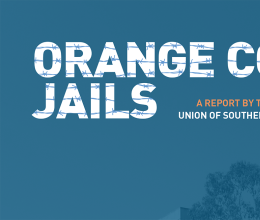Public Safety and Realignment
California’s prison system has become a revolving door. Evidence-based alternatives to incarceration will reduce recidivism rates.
California is at a criminal justice crossroads. After decades of “tough on crime” policies and draconian sentencing practices, the state correctional system—one of the largest incarcerators in the largest incarcerating country in the world—finally buckled under its own weight. Faced with a historic U.S. Supreme Court order requiring the state to reduce overcrowding, California made a momentous decision: it would no longer take into state facilities or under state custody most people convicted of low-level, non-violent offenses, instead tasking counties with dealing with these individuals at the local level.
Legislatively codified as the Public Safety Realignment Act, or Assembly Bill 109 (AB 109), this major policy shift has put California’s 58 counties in the driver’s seat. Each county will choose its own path, but their futures are intertwined. Poor implementation in one county will inevitably affect others. All will affect California taxpayers.
The ACLU has conducted an in-depth review of all 53 available county realignment implementation plans, and we have analyzed the statutory changes and related state laws and budget allocations.
Documents
Related content
Federal Appeals Court Requires Immigration Authorities to Consider...
October 3, 2017ACLU: Immigrant Detainees in Orange County Illegally Denied...
September 13, 2017Advocates Applaud Governor Brown and Chief Justice's Commitment to...
August 25, 2017ACLU SoCal Statement on OC Sheriff Sandra Hutchens’s Retirement
June 27, 2017ACLU Report Finds Inhuman, Violent Conditions in Orange County Jails
June 27, 2017